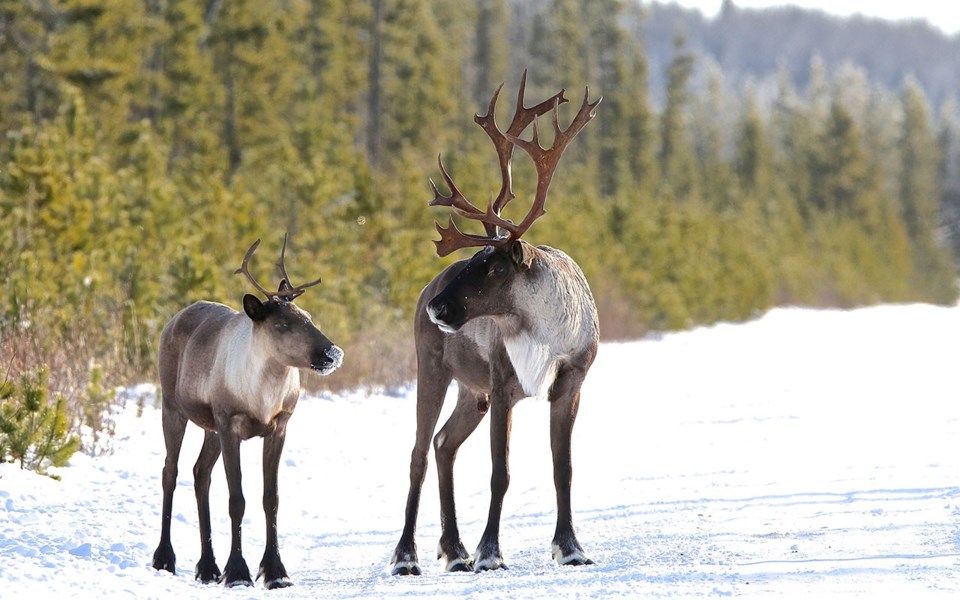The government of British Columbia is kick starting discussion and consultation on a new wildlife management and conservation strategy.
"The intention is to solicit ideas from people who are closely following wildlife management," explained Minister of Forests, Lands, Natural Resource Operations and Rural Development Doug Donaldson.
"We know that many British Columbians have a passion for wildlife in B.C. and that passion equates into great knowledge."
In recent decades, alteration of habitat due to expanded human populations and expanded natural-resource development has increased pressure on certain wildlife populations, with alarming declines of moose and caribou populations in certain parts of the province.
As part of the consultation process, the government is inviting the public to comment online and is meeting with key stakeholders, including Indigenous groups. It has also released a discussion paper, Improving Wildlife Management and Habitat Conservation in British Columbia, aimed at facilitating conversation and feedback.
"A part of our commitment in our (provincial election) platform was that we endorsed the United Declaration on the Rights of Indigenous Peoples decision and the Tsilhqot'in decision," Donaldson said, referring to the historic 2014 Supreme Court of Canada decision that ruled that the B.C. First Nation has aboriginal title to more than 1,700 square kilometres of land.
He added that there is a need to "co-develop" new management models with Indigenous groups, rather than simply consult with them when the product is more or less finished.
"It's also about recognizing that many First Nations have incredible traditional ecological knowledge that needs to be tapped into if we want to ensure the sustainability of populations," said Donaldson, who has a bachelor's degree in wildlife biology and has spent his career living and working in rural B.C.
For Johnny Mikes, field director for the Coast to Cascades Grizzly Bear Initiative, it is high time for the province's new NDP government to take "meaningful action" on wildlife management.
When talking to other conservationists, he said the "common theme" that comes up is the need for habitat conservation. "The key thing they focus on is habitat," said Mikes.
"That's the common theme that the province is likely to hear—to protect the habitat, to safeguard the habitat to make sure there is ample habitat for the whole range of species that people are concerned about."
Mikes also wants to see clear legislation when it comes to wildlife species recovery.
Given the province's heavy reliance on industry, land managers across the province often face pressure from industry and politicians to allow development where it might not be best, he explained.
"They get pressured," said Mikes. "So having legal objectives to say one needs to maintain a population makes it more likely that you're going to be able to retain wildlife on the landscape."
He also noted the emphasis on First Nations consultation in the government's approach. "The courts have clarified that there needs to be a different relationship with First Nations," said Mikes.
The new wildlife conservation and management strategy is one of several things the government is currently working on that could impact vulnerable British Columbian wildlife. Others include a comprehensive new plan to restore and conserve woodland caribou.
The number of caribou in B.C. has declined from 40,000 in the early 1900s, to less than 19,000 today.
Jesse Zeman of the B.C. Wildlife Federation, a hunting and fishing organization, said the province is facing real challenges when it come to preserving its most-prized wildlife, with record lows of Thomspon steelhead and mountain Caribou.
According to Zeman, B.C.'s south Selkirk caribou is now functionally extinct and the South Purcell's population is at a record low of four animals.
Zeman said the province's wildlife problems boil down to one issue: underfunding.
The province's fish and wildlife branch receives around $34 million a year, a number that has stayed relatively flat since the 1970s, despite major growth in the overall provincial budget explained Zeman.
Jurisdictions like Washington State, Montana, and Idaho, invest far more in wildlife conservation, he said.
"We're kind of living in the Dark Ages when it comes to our fish and wildlife agencies," he said.
Resource projects have resulted in many logging roads and human incursions into the wilderness. "When you add them all together, you have a cumulative effect that has tremendous negative effects on wildlife populations all over the province," said Zeman.
So far the province's new NDP government has committed an additional $14 million over the next three years to improving wildlife management and habitat conservation, a number Minister Donaldson described as "a significant amount of money considering the overall demands on a provincial government."
He added that going forward the government will look to "leverage provincial dollars in better ways."
It's been shown that there are not enough resources within government to do all of the habitat restoration and species inventory work, said Donaldson.
"(So) we're looking at a new model (where) we can partner with (groups) outside of government agencies, whether they're foundations or associations of interested people, to ensure we have the financial resources to do the work," he said.
To give feedback on what B.C.'s wildlife and habitat conservation strategy should look like, visit the province's wildlife and habitat website by July 31: https://engage.gov.bc.ca/wildlifeandhabitat/.




